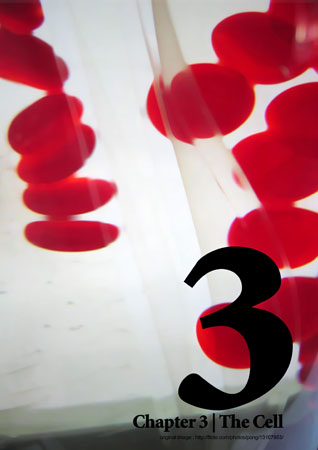The Anatomy and Physiology of Animals/The Cell
From WikiEducator

original image by rpongsaj cc by
In this chapter you are introduced to the fact that cells are of different types and sizes. Different parts of a typical animal cell are described with a brief explanation about how each part functions. The important processes of diffusion, osmosis and active transport are also explained in some detail. These processes enable substances to cross into and leave cells, and it is important that you have a good understanding of them; they form the basis for many body system functions. Finally the two different ways in which cells divide, mitosis and meiosis, are summarised.
Objectives
After completing this section, you should know:
- that cells can be different shapes and sizes
- the role and function of the plasma membrane; cytoplasm, ribosomes, rough endoplasmic reticulum; smooth endoplasmic reticulum, mitochondria, golgi bodies, lysosomes, centrioles and the nucleus
- the structure of the plasma membrane
- that substances move across the plasma membrane by passive and active processes
- that passive processes include diffusion, osmosis and facilitated diffusion and active processes include active transport, pinocytosis, phagocytosis and exocytosis
- what the terms hypotonic, hypertonic isotonic and haemolysis mean
- that the nucleus contains the chromosomes formed from DNA
- that mitosis is the means by which ordinary cells divide the main stages of mitosis
- that meiosis is the process by which the chromosome number is halved when ova and sperm are formed
Summary
- Cells consist of three parts: the plasma membrane, cytoplasm and nucleus.
- Substances pass through the plasma membrane by diffusion (gases, lipids), osmosis (water), active transport (glucose, ions), phagocytosis (particles), pinocytosis(fluids) and exocytosis (particles and fluids).
- Osmosis is the diffusion of water through a semipermeable membrane. Water diffuses from high water concentration to low water concentration.
- The cytoplasm consists of cytosol in which are suspended cell inclusions and organelles.
- organelles include ribosomes, endoplasmic reticulum, mitochondria, Golgi bodies and lysosomes.
- The nucleus controls the activity of the cell. It contains the chromosomes that are composed of DNA.
- The cell divides by mitosis and meiosis
Presentations and Blackboard quizzes can be accessed by students of Otago Polytechnic.